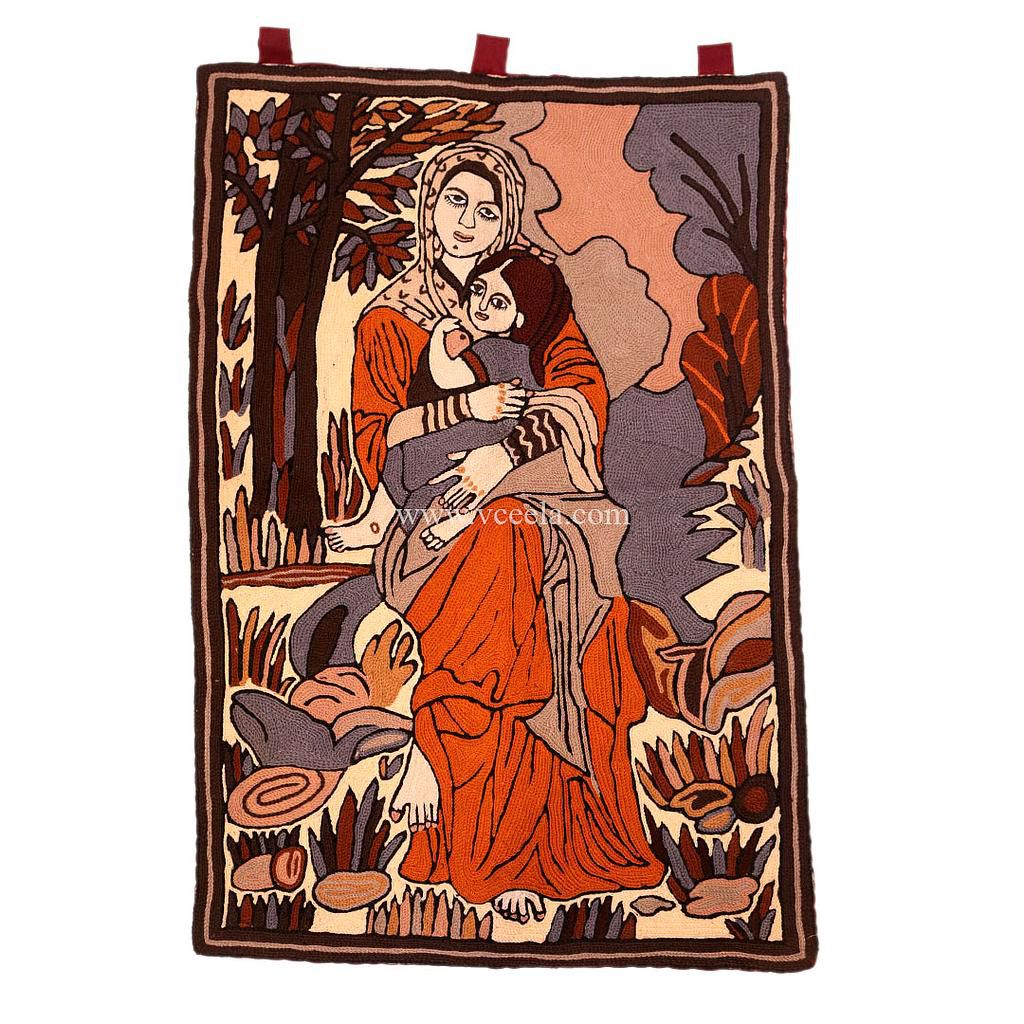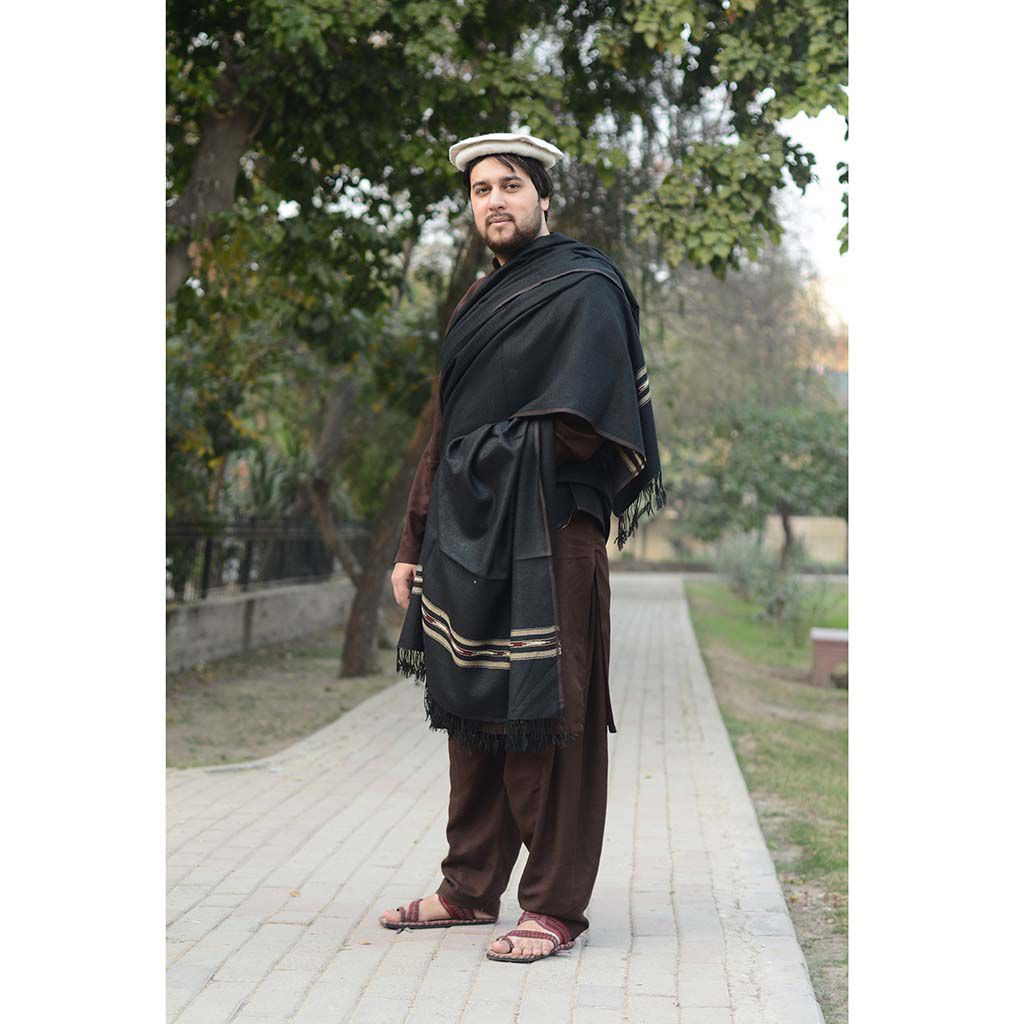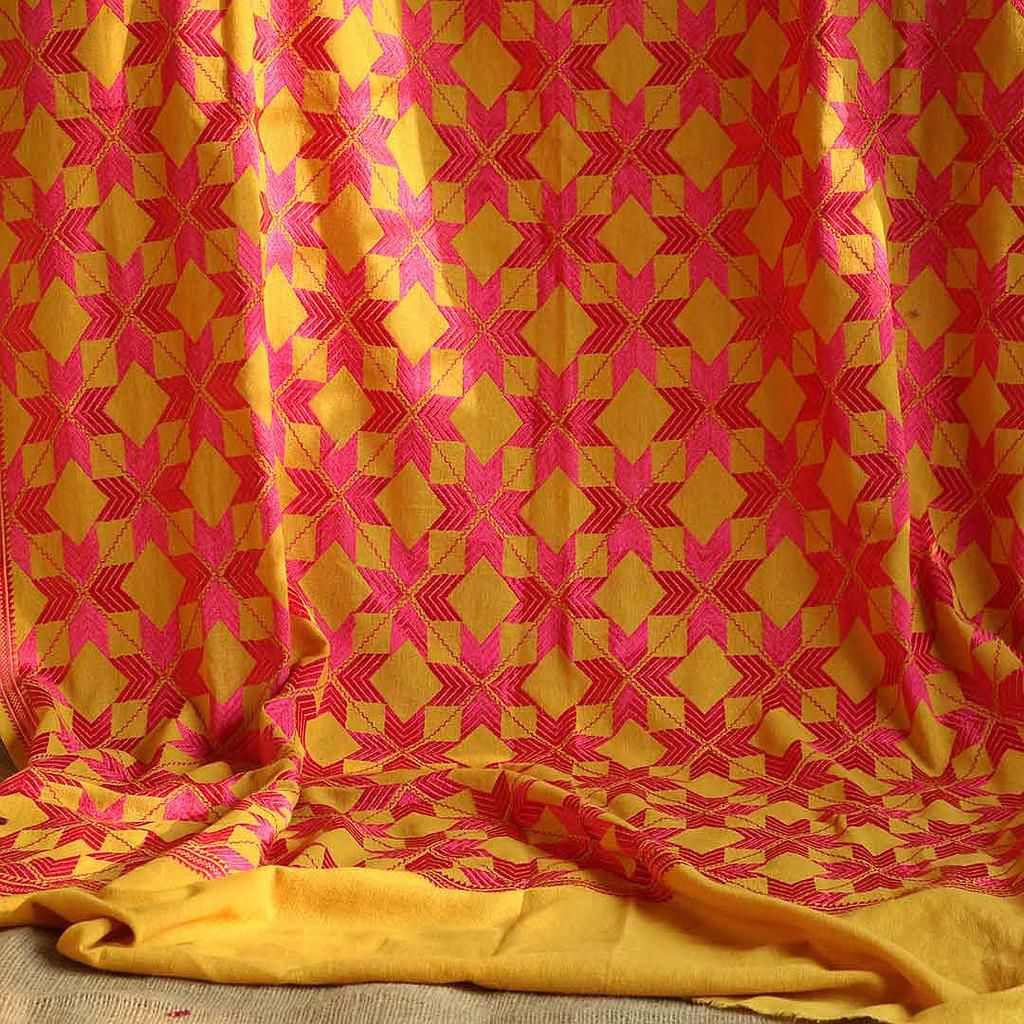The beautiful Swat Valley is a flourishing centre for the creation of exquisite arts and crafts. These handicrafts are accumulated by tourists and are famous at home and abroad. A bemusing variety is present in the articles made by the skilled craftsmen of Swat.
Handmade Swati shawls are considered special gifts for men
Swati shawls are intended for men to be worn for escaping the severity of the winter season.
Foremost among these are the woollen blankets, commonly known as ‘Sharai’. These are intended for men and are worn all over the valley for escaping the severity of the winter season. ‘Jollagen’ or weavers are primarily engaged in making these. The blankets weigh around four kilos and are produced in Dewlai, Kala Kalay, Salampur, Puran and Ghurband. Similar to the blankets are the shawls made for women, created from woollen sheets. Cotton is mixed with the wool to add some texture to the fabric and the ends are fringed exquisitely. ‘Lamsay’ or rugs are made using the fleece from local livestock, which is then spun using a wooden instrument. The spun fleece is then laid out on a straw mat and sprinkled with water and dye in astonishing shades of pink, black and crimson. Then, the straw mat is rolled and tread upon.
The embroidery of Swat is especially captivating and is an ancient and revered art, inherited from the artisans of Gandhara
The embroidery of Swat is especially captivating, and is an ancient and revered art, inherited from the old Gandhara civilization.
The embroidery of Swat is especially captivating and is an ancient and revered art, inherited from the artisans of Gandhara. Women are usually engaged in this art as they spend a large portion of their day indoors, so it also serves as a pastime for them. Even young girls can often be seen with needles in their hands. The embroidered work of Nekpikheil is especially stunning and can be classified into three broad areas consisting of silken thread work, cotton thread work and golden lace work. The silk work is hardest and most time consuming as the threads of warp and woof of the cloth have to be counted and the embroidery carried out according to calculations. Bed coverings, table cloths, pillows, shirts and caps are created using this technique. Pure silver yarn is used on dresses which are heavy and ostentatious. It is common to embroider verses, mosaics, animals, flowers, fruits and natural landscapes on these dresses. The finery of brides is mesmerizing with beaded and mirrored embroidery around the necks of dresses and ends of shirts and shawls. Golden and silver ribbons are used excessively with artificial gemstones and colored glass beads or ‘Laloona’. This gives an ethereal beauty to the brides of this valley.

Handmade Swati Cultural Gabba Wall Hanging
Aside from garments, Swati craftsmen make ‘Panrae’, which are old fashioned leather shoes, embellished with gold lace. However, this craft is becoming archaic. ‘Bachookay’ are braids for hair, made with strips of silk and cotton woven together and ornamented at the end with beads and tinkling bells. Interestingly, Swatis locally produce many of the items used in their daily lives and beauty is an important element.
Shkors are elegant containers for storing Chappatis. Wheat stalk is used in their construction and even this simple item is emblazoned with beautiful art work.



